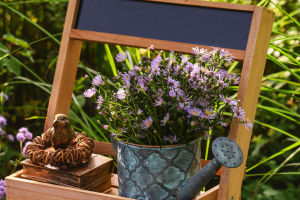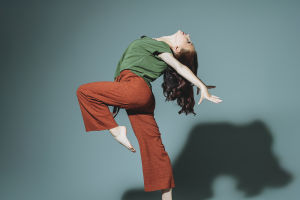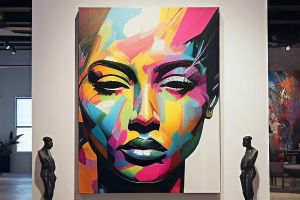Artificial intelligence has rapidly transformed many fields, and art is no exception. With its increasing ability to learn, adapt, and create, AI is challenging traditional notions of creativity, prompting both excitement and concern.
How is artificial intelligence shaping the future of art? Can it truly replace human artists? In this article, we will explore the rise of AI in art creation and examine its impact on the art world, artists, and the public.
Understanding AI in Art
AI in art refers to the use of algorithms and machine learning models to create or assist in the creation of art. It's a broad field that spans multiple types of media, including visual art, music, and literature. Programs like DeepDream, DALL·E, and GPT-3 have demonstrated the power of AI in generating images, paintings, and even poetry.
These AI systems learn patterns from vast datasets of human-created content and apply them to produce new works, often with surprising results.
The use of AI in art challenges the traditional understanding of creativity. Where once art was seen as a distinctly human endeavor, AI now brings new possibilities. While some argue that AI-generated works lack the emotional depth and personal touch that a human artist might imbue, others celebrate AI for its potential to explore new artistic territories that human imagination alone might not reach.
The Technology Behind AI Art Creation
At the core of AI-generated art are machine learning techniques, particularly deep learning and neural networks. These systems are modeled after the human brain, with interconnected "neurons" that process data and recognize patterns. AI art tools, such as GANs (Generative Adversarial Networks), are particularly popular for creating visual content.
GANs consist of two neural networks: a generator that creates images and a discriminator that evaluates them. Over time, these networks improve through a process of trial and error, resulting in increasingly sophisticated artworks.
For example, AI tools like DALL·E, developed by OpenAI, can generate incredibly detailed and original images from textual descriptions.
A user can input a phrase like "a cat wearing a top hat," and the system will generate multiple images that match the description, showcasing the creative potential of AI. The results are often uncanny and reveal how AI interprets and visualizes concepts in unexpected ways.
The Impact on Artists
AI has undoubtedly made waves in the art community, offering artists new tools for experimentation and inspiration. Rather than replacing human creativity, AI can serve as an extension of an artist's vision, helping them explore new ideas and techniques.
For instance, digital artists now use AI programs to generate concept art, backgrounds, or even entire scenes that serve as starting points for their work. In this way, AI is seen more as a collaborator than a competitor.
However, the rise of AI in art creation has also raised questions about the role of human artists in a world where machines can generate highly realistic or imaginative works.
Some fear that AI-generated art could flood the market, making it harder for traditional artists to gain recognition. Others worry about the loss of human touch and the emotional depth that human artists bring to their creations.
AI and the Changing Definition of Creativity
One of the most intriguing questions raised by AI art is: what does it mean to be creative? Traditionally, creativity has been associated with human ingenuity, emotions, and subjective experiences. Art has always been seen as a reflection of the human condition, capturing our thoughts, fears, joys, and desires.
With AI, however, the lines between human and machine creativity become blurred.
Some argue that AI's ability to create art challenges the idea of creativity itself. If machines can produce work that resonates with viewers, can we still consider creativity a uniquely human trait? Or is creativity merely a function of data and pattern recognition, something that can be replicated by a machine given the right algorithms? These questions force us to reconsider how we value and understand art.
The Reception of AI Art in the Public Eye
The reception of AI art by the public has been mixed. On one hand, AI-generated art has garnered attention for its novelty and ability to produce unexpected, thought-provoking pieces. For instance, in 2018, a portrait created by the AI program Obvious sold at auction for over $432,000, sparking widespread interest in AI art as a new genre.
On the other hand, some people are skeptical about the authenticity of AI art. Many see it as a mere imitation of human creativity, devoid of the personal experiences and emotional depth that characterize traditional art. Critics argue that because AI lacks consciousness, it cannot create in the same way that a human artist can. This debate has sparked important conversations about authorship, originality, and the value of art in the age of automation.
AI and the Future of Art Creation
Looking ahead, the future of AI in art creation is filled with both excitement and uncertainty. As AI continues to evolve, it is likely that its role in the art world will become even more significant. Artists will likely continue to embrace AI as a tool for creative exploration, pushing the boundaries of what is possible in terms of artistic expression.
However, as the technology improves, the question of whether AI can ever fully replace the human artist will remain a point of contention.
At the same time, AI's influence on the art world could democratize the creation of art. With AI tools becoming more accessible, people who may not have traditional artistic training can use these technologies to produce their own works. This could lead to a more diverse range of voices and perspectives in the art world, as well as new forms of collaboration between humans and machines.
Conclusion: Embracing the Future of AI Art
The rise of AI in art creation presents both challenges and opportunities. As we enter this new era of artistic expression, it's essential to keep an open mind about what AI can offer to the creative world.
Rather than seeing AI as a threat to traditional artistry, we should embrace its potential to expand the boundaries of creativity and help us reimagine what art can be. While AI may never fully replace the human touch, it certainly has the power to transform the way we create, experience, and appreciate art.
As technology continues to evolve, one thing is certain: the future of art is bound to be shaped by both human ingenuity and artificial intelligence. How will you interact with this exciting new frontier in creativity?


